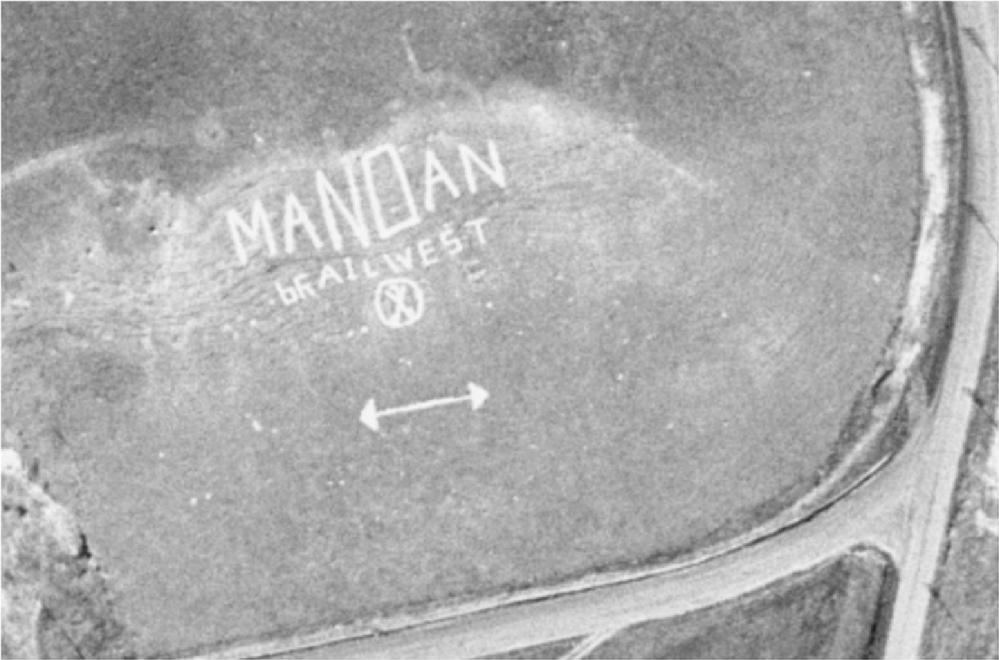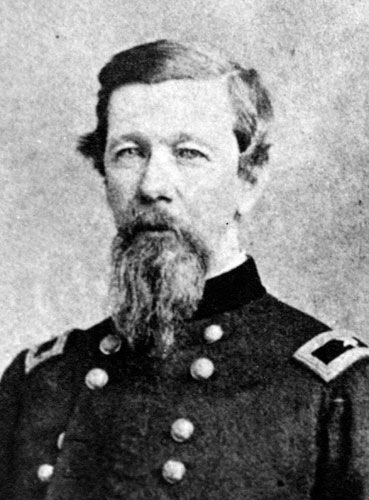A view of Crying Hill from above in the 1930s.
Crying Hill:
A Sacred Natural Landmark
Where The Hidatsa Became Two Tribes
Edited by Dakota Wind
Mandan, N.D.
- In 1919, Colonel Alfred Burton Welch, a World War I veteran came to call the
city of Mandan, N.D. home. There in Mandan, Welch began a new life as a store
keeper, he also served as the post master, and founded the El Zagel Shrine. He
spent the remainder of his life in the rolling hills of Heart River country
along the Missouri River valley, and became fast friends with many of the
Indian tribes there.
Captain AB Welch, seen here in his uniform from the 1898 Spanish-American War.
Welch became good friends
with Chief John Grass. Grass was a distinguished Sihásapa Lakȟóta leader and veteran of the Sioux campaigns of the
1870s such as the Little Bighorn. Grass was known to the Lakota as Matȟó WatȟákpA, or Charging Bear. He had
attended the Carlisle Indian School and became fluent in English to help his
people fight the government in the new battlefields, the courtrooms. In March
1913, Grass adopted Welch as his son and bestowed on him Grass’ own name of
Charging Bear.
While Welch lived in Mandan
he took in all the lore about the site and more, and recorded as much as he
could. One of those site stories he recorded was about the village and people
who lived in the Mandan village along the Heart River near to Crying Hill.
Andrew Knudson painted this scene of the Corps of Discovery entering Black Cat's village near Knife River. A similar village would have graced the banks of Heart River below Crying Hill. That village was known to the Mandan as Large And Scattered Village.
The Mandan Indians have
lived along the Upper Missouri River for about a thousand years and longer if
you take into account their emergence story south of Mandan.
According to Welch, or the
stories he attributed to the Hidatsa, Crying Hill is where the Hidatsa split
into two distinct tribes. Welch uses the term Gros Ventres to name the Hidatsa. Here’s the story, Feb. 24, 1925:
The Gros Ventre were divided into two bands, and each
of these bands followed their own chiefs. One starving winter-time they were
reduced, by the absence of game and the failure, or destruction, of their
crops, to eating the red seed pods of the wild rose bushes.
But, at last, through the prayers of a holy man among
them, one lone, rogue buffalo bull, lean and staggering, wandered close to the
village. He was chased and fell in the exact middle of the Heart River. Upon
being dragged to the shore, it was decided that the meat should be divided in
two equal portions, each band obtain the same amount of meat, bone and
hide. When the division was made, one band was aggrieved and claimed that
the other party had obtained the fatty portion of the stomach, while they had
only the lean part.
The aggrieved band then decided that they would leave
the other and go into a country which they would discover, and where they would
be their own hunters and use their kill as they saw fit to do. Consequently
this band did leave, traveled southwest into the country west of the Black
Hills and east of the Big Horn Range, which territory they secured and where
they have maintained themselves ever since that day.
These are the people known today as the Crows. They
frequently come to visit the Gros Ventre; speak the same language and accept
each other as cousins or relatives, but the real Gros Ventre call the crows the
“Jealousy People,” on account of the separation, long ago.
Crow Indians Firing Into The Agency by Frederic Remington.
A variation of the story
about the separation of the Hidatsa into two tribes came a few years earlier by
way of Joe Packineau, Dec. 3, 1923:
“Crow Indians are Gros Ventre. I will tell you
how it came about that they do not live together now. “That Indian village site
in Mandan, we call it “Tattoo Face.” It is not Mandan village, but Gros
Ventre or Hidatsa.
“There were two brothers born in that place a long
time ago. One had a tattoo mark on his face like a quarter moon. It started on
the cheek and ran down across the chin and up on the cheek on the other side of
his face. So the people called him Tattoo Face. He became a very
famous man among the Gros Ventre. His brother was all right, and he was
named Good Fur Robe. He also became a very great man and a wise man.
“Good Fur Robe was the one who had the corn seeds
first. He gave one grain to each person and told them how to plant and
look after the plant. Tattoo Face had tobacco before anyone else.
“Now the best part of a buffalo is his paunch. It is
nice to eat. One time there was one buffalo which they killed right in the
river there. He dropped dead in the middle of the Heart River when he was
killed. The people drew him out for they were hungry. Good Fur Robe
was the biggest chief, so he took the paunch when they divided the buffalo up
between the two bands.
“That made [the] Tattoo Face people mad so that band decided
that they would go away. They did go, and made their home in the country west
of the Black Hills after that time.
“People call that people Crows now. But the
Hidatsa do not. We call them “The Paunch Jealousy People.”
So the place where these people separated from the
Hidatsa, is the Heart River at the Crying Hill (or Tattoo Face Village) which
was Gros Ventre. The Mandan lived there too after that, I think.”
Crying Hill is located
within the city of Mandan, ND. In 2003, Patrick Atkinson purchased Crying Hill
in efforts to save the heritage site from further development. Read about
Atkinson’s efforts to preserve Crying Hill.













